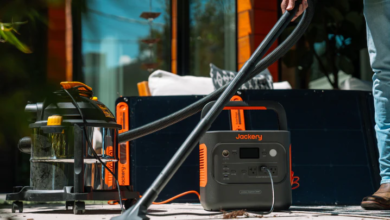
Implementing Automated Lighting Systems for a Smarter and More Sustainable Home
From the calming glow of sunrise simulations to the safety net of lights that turn on automatically as you approach, the realm of home lighting has transformed. In the age of smart living, automated lighting systems have taken center stage, promising convenience, efficiency, and even a dash of futuristic flair. For homeowners keen to blend cutting-edge technology with sustainable choices, the lighting automation market offers a bevy of solutions to optimize one of the most fundamental facets of home design.
Table of Contents
The Advantages of Automated Lighting
Automated lighting stands as a beacon of modern living, ensuring that your home’s ambiance and functionality align with your lifestyle. Here are the general advantages you can expect:
Convenience at Your Fingertips
Imagine the luxury of setting the mood for an intimate dinner with a touch of your smartphone. Automated lighting simplifies the daily chore of flipping switches by intelligently responding to your needs, with schedules and scenes that are easily programmable.
Energy Efficiency is the New Illumination Standard
Gone are the days of leaving lights on in empty rooms. Automation not only reduces the likelihood of human error but also offers real-time energy monitoring, better-equipping homeowners to make greener choices.
Enhanced Security with Intelligent Illumination
An integral part of any home security strategy, motion-activated lights serve as both a deterrent and an early alert system. Automated lighting can mimic occupancy patterns when you’re away, giving the illusion of someone being home.
Types of Automated Lighting Systems
The spectrum of available automated lighting systems caters to distinctive needs and levels of automation:
Motion and Proximity Sensors
Ideal for those on a budget or seeking a straightforward security feature, these systems detect movement or nearby presence to activate lighting and are often plug-and-play for immediate usage.
Smart Bulbs and Smart Plugs
To dip your toe into automation, consider smart bulbs that can change color or brightness with an app, or smart plugs that give standard lamps a smart upgrade.
Whole-Home Lighting Control Systems
For a comprehensive solution, whole-home lighting control systems offer the ultimate in flexibility and personalization. With centralized access controls, you can adjust lighting in each room or set sequences that correspond to your daily routines or moods.
The Installation Process
Installing automated lighting can be as simple or as involved as you choose:
DIY Delight
Many automated lighting products are designed for easy installation by the average homeowner. DIY enthusiasts can find satisfaction in setting up their chosen system, often with minimal tools and technical skills required.
Professional Panache
For the tech-savvy yet time-poor, or for those aiming to integrate complex lighting structures, professional installation ensures that your system not only works but that it works well and for the long term.
Overcoming Common Challenges
While automated lighting systems are designed for user-friendly operation, there can be hurdles to a seamless experience:
Financial Flux
The initial investment in an automated lighting system can vary widely, from cost-effective single-room solutions to high-end, whole-house systems that represent a significant financial outlay. However, the long-term energy savings and potential home value can be compelling arguments for the investment.
The Compatibility Conundrum
Navigating the compatibility of smart devices and platforms can sometimes be tricky, especially with emerging technologies. Engaging with a reputable vendor or professional can help to mitigate this compatibility maze.
Adjusting to a New Normal
At first, transitioning to an automated lighting system might feel like learning a new language. With a little patience and experimentation, you’ll soon be speaking fluently, orchestrating your home’s lighting with grace.
The Future of Automated Lighting
The light at the end of the tunnel for automated lighting is boundlessly bright. In the coming years, expect even more seamless integration with voice assistants, refined sensors that learn from your behavior, and increased interoperability across smart home devices.
Conclusion
Amid growing concerns for the environment and a global push for efficiencies, automated lighting elevates the standard for what lighting systems can provide to individuals and their homes. Integrating these systems is not only about following the trend but about crafting a living space that is truly in tune with your habits and priorities, from energy consumption to personal security. Ready to experience the revolution in lighting technology? With a spectrum of options, the mantle of home lighting mastery is within reach, illuminating the path to a smarter, more sustainable future you can proudly call your own.








